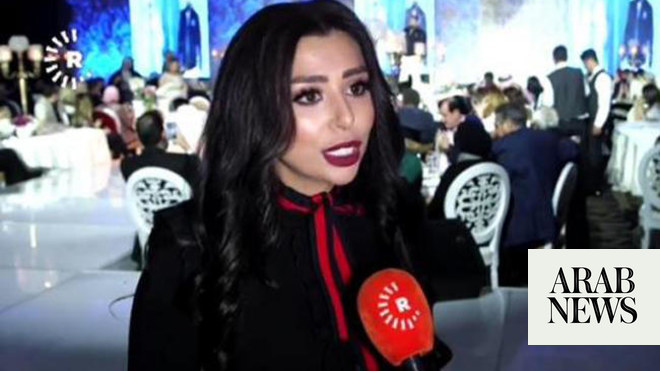What are the odds of being a rising fashion star with ties to one of the most infamous figures of the late 20th century? As Banan Kamel steps into the spotlight, it’s impossible not to acknowledge her undeniable ability to capture attention and craft a narrative where legacy meets modern innovation. Granddaughter to Saddam Hussein and daughter to Hussein Kamel al-Majid and Raghad Hussein, Banan carries a legacy that’s both daunting and intriguing. But as we’ll see, her story is less about where she came from and more about where she’s headed.
Banan’s entrance into the public eye is as layered as her family tree. Yet, rather than be overshadowed by the political legacy, she’s building her own name. With a foundation as solid as her family’s historical roots, she’s poised for a radically different journey—one involving high fashion runways instead of political podiums.
Stepping into the Fashion Industry
Well, they were gonna find out—the fashion world, that is. Banan Kamel took her initial interest in fashion and turned it into a reality, carving out her niche as a designer to watch. Starting with an early fascination with design, she seized the opportunity to showcase her talent at the Nowruz festival in Amman, Jordan.
Recognition came swiftly. Amidst a sea of vibrant cultural expressions, her work stood out. It’s not every day you win the best young fashion designer award at such a significant event. What did this mean for Banan? Plenty. For starters, it placed her squarely on the radar of industry insiders. Receiving this accolade wasn’t just a pat on the back; it was confirmation of her potential. The verdict: the fashion world was ready to embrace her.
Core Dreams and Values
Here’s a twist—Banan Kamel isn’t just about seams and stitches. Her dreams extend beyond her immediate world. She ardently hopes for a united and peaceful Iraq, a place where culture and tradition mingle without conflict. Equality and inclusiveness are not just buzzwords for her; they’re core values shaping both her designs and her vision for a better society.
Her commitment to this vision is palpable. “There are no differences between us, whether you are a Kurd, Shiite, or Sunni,” she notes in interviews. It’s this ethos of inclusivity that threads through her work, showing a deep understanding of cultural tapestry and unity. The takeaway: creating with love and purpose isn’t mere rhetoric—it’s a method.
Achievements and Recognition
Winning awards is one thing; handling the following media storm is another. As news outlets began to cover her journey, Banan adapted, turning that floodlight into an opportunity to illuminate her brand. Embracing the media attention wasn’t just strategy; it was an art form, allowing her to navigate public perception skillfully.
As the coverage increased, so did her influence in fashion circles. Doors began to open. International collaborations emerged, and suddenly, her work was not just a local or regional interest; it became globally relevant. The role media plays in elevating careers can’t be overstated. In Banan’s case? The verdict: it accelerated her journey.
Living in Dubai and Global Presence
Imagine sketching designs with the backdrop of Dubai’s skyline. For Banan, it’s not imagination but reality. Now residing in this buzzing metropolis, she has positioned herself at the crossroads of Eastern tradition and Western modernity—a dynamic stage that matches her aesthetic ambitions.
But Dubai is just the beginning. Her participation in international fashion events has globalized her presence, with diverse representations of her work. Her collections, showcased by models of all backgrounds, speak to a universal audience. The global stage has become a fitting setting for her multicultural vision. Check out her journey and those who have ventured into the global sphere at Up Business Journal.
Influence of Family Legacy
Talk about a legacy! Banan’s father, Hussein Kamel al-Majid, and her mother, Raghad Hussein, both left indelible marks, albeit in controversial territories. This legacy of power and influence has undoubtedly shaped her worldview. Her father was an Iraqi official with significant clout, while her mother has remained a nascent public figure.
Is it pressure or inspiration? Perhaps both. What’s clear is that her family background offers a unique perspective, motivating her to forge an independent and vibrant path. Handling such a legacy with grace while pursuing one’s passions isn’t a small feat. And Banan seems to do it effortlessly. The takeaway: balance legacy with innovation, and let your work do the talking.
Vision for a United Iraq
The prospects for Iraq haven’t dimmed in Banan’s eyes. Instead, her vision is unapologetically optimistic. She champions cultural harmony with an insight that bridges divides. In interviews, her stance is crystal clear—advocacy for unity isn’t a passive hope; it’s an active pursuit.
Her aspirations for her home country are both a personal and professional calling. She weaves these hopes into her work, crafting fashion as a statement for peace. By doing so, she not only projects her vision but also aligns herself with efforts for greater cultural understanding. Verdict: personal dreams can power societal shifts.
Conclusion
In Banan Kamel’s story, the past mingles with the present, crafting a narrative promising more than just fashion accolades. Her journey from the granddaughter of a prominent political figure to a celebrated fashion designer encapsulates the art of redefining one’s narrative. Her contributions to fashion are already noteworthy—but what’s more exciting is her potential future impact.
Imagine a world where cultural unity isn’t just a dream but an integrated reality. Through her work, Banan communicates that vision, effectively countering division with creativity. As she continues on her path, she serves as an inspiration, showing that even in a world overshadowed by legacy, one can create new, joyful stories. One stitch at a time.







